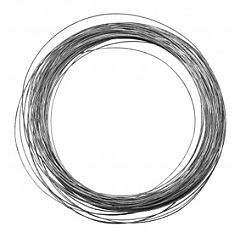
10 Meter Cut-to-Length K-Vaping heating wire, and resistance coil Wire | 22AWG (0.64mm)
Check my rate
| Main centres: | 1-3 business days |
| Regional areas: | 3-4 business days |
| Remote areas: | 3-5 business days |

| Main centres: | 1-3 business days |
| Regional areas: | 3-4 business days |
| Remote areas: | 3-5 business days |
K-wire is a ferritic iron-chromium-aluminum alloy (FeCrAl alloy) for use at temperatures up to 1400°C (2550°F). It is used in various equipment and also in Rebuildable Ecigarette Coils used by some SubOhm tanks / Atomizers as at Kanger Subtank Mini / Kanger Subtank Plus V2. The alloy is characterized by high resistivity and very good oxidation resistance.
It is commonly used to rebuild the RBA Deck as at Kanger Subtank Mini RBA Deck and Rebuilding coils with K-wire Wire can be assisted by using the RDA / RBA Deck Toolkit.
When K-wire is replaced on an RBA Deck you also need to replace the Organic Cotton that can be found here.
Resistance wire does not easily rust or oxidize, even in extreme environments. K-wire is often chosen for its excellent oxidation resistance. It can be exposed to sulfuric compounds and not corrode quickly, making it well suited for corrosion resistance in hot states. Nichrome has similar properties but oxidizes more quickly than K-wire in sulfur-containing atmospheres.
The terms "annealed" and "half-hard" refer to the temper of the metal or the condition produced by mechanical treatment. The annealed wire can be shaped and cut easily, making it relatively flexible, soft, and bendable when pressure is applied. An annealed surface is achieved by exposing the metal to high heat and allowing it to cool slowly. Half-hard treatment refers to rolled and drawn wire.
The Maximum Operating Temperature refers to the highest temperature the wire can withstand without suffering damage. K-wire wire can operate up to 1400°C (2550°F) safely, while Nichrome wire has a melting temperature around 1150°C (2100°F).
The more heat the wire generates, the more resistance it creates. Resistance is affected by volume, diameter, and length of wire. The longer the wire, the higher the overall resistance. The thinner wire has higher resistance than thicker wire.
Resistance wire expands in diameter and length when exposed to high temperatures. All resistance wire has different reactions to heat and will expand different amounts. To determine the expansion of either K-wire wire or Nichrome wire, check the specifications of the wire. The expansion rate and flexibility also depend on the diameter, or gauge, of the wire.
You can solder to resistance wire, but you will need a special flux and high-temperature solder. Common electrical solder will not stick to the resistance wire. An alternative would be to use crimp connectors or screw terminals in place of solder.
Typical applications for K-wire A-1 are electrical heating elements in high-temperature furnaces for heat treatment, ceramics, glass, steel, and electronics industries and for our use as vapors we use it to rebuild the coils as stated above.
| Creep strength - 1% elongation in 1000 h | ||
| Temperature °C | 800 | 1000 |
| MPa | 1.2 | 0.5 |
Physical properties
| Young's modulus | |||||||
| Temperature °C | 20 | 100 | 200 | 400 | 600 | 800 | 1000 |
| GPa | 220 | 210 | 205 | 190 | 170 | 150 | 130 |
| Temperature factor of resistivity | ||||||||||||||
| Temperature°C | 100 | 200 | 300 | 400 | 500 | 600 | 700 | 800 | 900 | 1000 | 1100 | 1200 | 1300 | 1400 |
| Ct | 1.00 | 1.00 | 1.00 | 1.00 | 1.01 | 1.02 | 1.02 | 1.03 | 1.03 | 1.04 | 1.04 | 1.04 | 1.04 | 1.05 |
| Coefficient of thermal expansion | |
| Temperature °C | Thermal Expansion x 10-6/K |
| 20 - 250 | 11 |
| 20 - 500 | 12 |
| 20 - 750 | 14 |
| 20 - 1000 | 15 |
| Thermal conductivity | ||||||
| Temperature °C | 50 | 600 | 800 | 1000 | 1200 | 1400 |
| W m-1 K-1 | 11 | 20 | 22 | 26 | 27 | 35 |
| Melting point °C | 1500 |
| Max continuous operating temperature in air °C | 1400 |